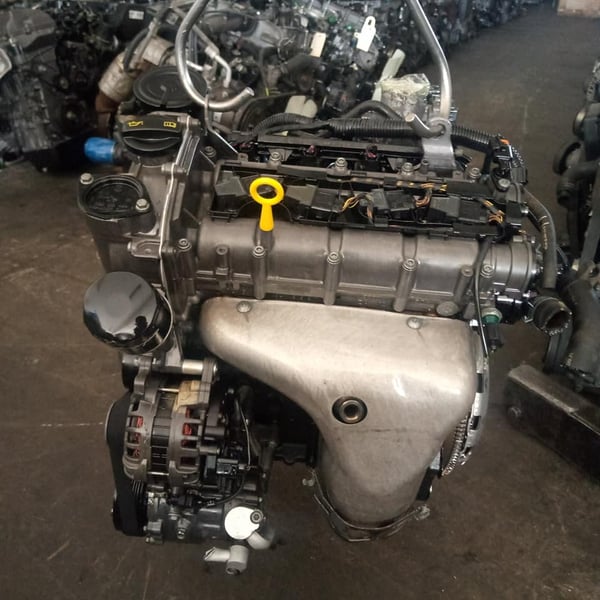Optimize fuel efficiency with a top-tier clp engine.
Just How a Clp Engine Can Enhance Efficiency in Different Industries
The development of CLP engines marks a substantial shift in functional effectiveness throughout different fields, driven by their capability to maximize gas usage and decrease downtime. Industries such as manufacturing and logistics stand to obtain considerably from their durable design and constant power result, which guarantee to streamline procedures and boost efficiency. As companies increasingly prioritize sustainability along with efficiency, the function of CLP engines comes to be a lot more crucial. What stays to be seen is just how these improvements will certainly shape the future landscape of industrial procedures and their effect on broader economic fads (clp engine).
Review of CLP Engines
CLP engines, or Continual Fluid Propellant engines, represent a considerable improvement in propulsion innovation, particularly for space applications. These engines make use of a continual feed system that enables for the sustained expulsion of propellant, leading to enhanced efficiency and efficiency compared to traditional strong or hybrid propulsion systems. By preserving a continuous circulation of fluid propellant, CLP engines can achieve much more specific drive control, which is essential for maneuvering spacecraft in numerous objective scenarios.
The layout of CLP engines incorporates innovative materials and innovative gas management systems. clp engine. This causes decreased weight and increased dependability, important factors for long-duration space objectives. The continual operation lessens the risk of burning instability, an usual difficulty in standard rocket engines.

Advantages in Production
The manufacturing of Constant Fluid Propellant (CLP) engines provides a number of remarkable benefits that improve both performance and cost-effectiveness. Among the main benefits is the streamlined production procedure, which lowers the complexity connected with typical propulsion systems. By using liquid propellant, manufacturers can attain higher precision in engine efficiency, leading to maximized power outcome and decreased waste.
Additionally, CLP engines promote a greater degree of modularity, allowing for less complicated combination right into different manufacturing lines. This flexibility can dramatically reduce lead times and boost general operational adaptability. Using CLP technology additionally has a tendency to minimize the requirement for considerable maintenance as a result of fewer moving components, which translates right into minimized downtime and operational prices.

Applications in Logistics
Leveraging Constant Fluid Propellant (CLP) engines in logistics supplies significant advantages in operational efficiency and reliability. These engines supply a durable option for numerous transport requirements, making it possible for the smooth motion of products throughout huge ranges. The fundamental style of CLP engines enables consistent power output, which translates right into smoother and extra foreseeable transport routines.
One of the key applications of CLP engines in logistics is in heavy-duty products transportation, where they can drive both ground and aerial cars. Their ability to maintain high efficiency under differing tons conditions makes sure that shipment timelines are met, thereby enhancing consumer contentment. Furthermore, CLP engines can be integrated into automated logistics systems, facilitating real-time monitoring and enhancing course preparation.
Furthermore, the toughness of CLP engines decreases maintenance downtime, permitting logistics business to maximize their functional abilities. This is particularly valuable in warehousing procedures, where effectiveness in handling and delivering goods is important. As logistics remains to advance, the combination of CLP engines represents a forward-thinking technique that not just improves performance however likewise sustains the market's growing needs for reliability and rate.
Impact on Power Efficiency
Exactly How do Continuous Liquid Propellant (CLP) engines boost energy performance in transport? CLP engines utilize a regular flow of liquid gas, optimizing burning procedures and maintaining a steady thrust output. This layout minimizes power losses connected with conventional burning engines, where gas shipment can differ and bring about ineffectiveness.
The constant procedure of CLP engines permits a more effective thermal cycle, causing greater specific impulse compared to traditional engines. clp engine. This converts to decreased gas usage for the exact same amount of work done, substantially decreasing operational costs across different transport markets, consisting of aviation and maritime industries
Furthermore, the capability of CLP engines to preserve optimum efficiency under differing lots problems reduces the need for regular velocity and slowdown, additionally boosting gas performance. Boosted power Click Here performance not just adds to set you back financial savings yet additionally leads to decrease greenhouse gas exhausts, straightening with international sustainability objectives.
Future Trends and Innovations
Arising innovations in try here Continual Fluid Propellant (CLP) engine technology guarantee to revolutionize the landscape of transport efficiency and sustainability. As sectors pivot towards greener options, CLP engines stand at the leading edge, integrating innovative products and layout techniques that boost performance while reducing environmental impact.
Among the most promising fads is the adoption of crossbreed systems that incorporate CLP engines with sustainable energy resources. This harmony can enhance fuel intake and minimize discharges, lining up with global sustainability goals. In addition, advancements in computational liquid dynamics (CFD) are helping with the design of even more aerodynamically effective engines, resulting in lowered drag and boosted fuel efficiency.
In addition, the advancement of wise monitoring systems is readied to improve functional performances. These systems leverage information analytics and IoT technology to maximize engine performance in real-time, making certain that the engines operate within their most efficient criteria.
As research proceeds to explore alternate propellant formulations-- such as biofuels and synthetic gas-- the future of CLP engines looks promising. By taking advantage of these developments, sectors can not only improve their effectiveness yet additionally contribute considerably to a cleaner, extra sustainable future in transport.
Final Thought
In verdict, CLP engines stand for a substantial innovation in performance throughout numerous sectors. The combination of sophisticated materials and less relocating components lessens see this site maintenance requirements, while alignment with sustainability goals placements CLP engines as a crucial modern technology for the future.